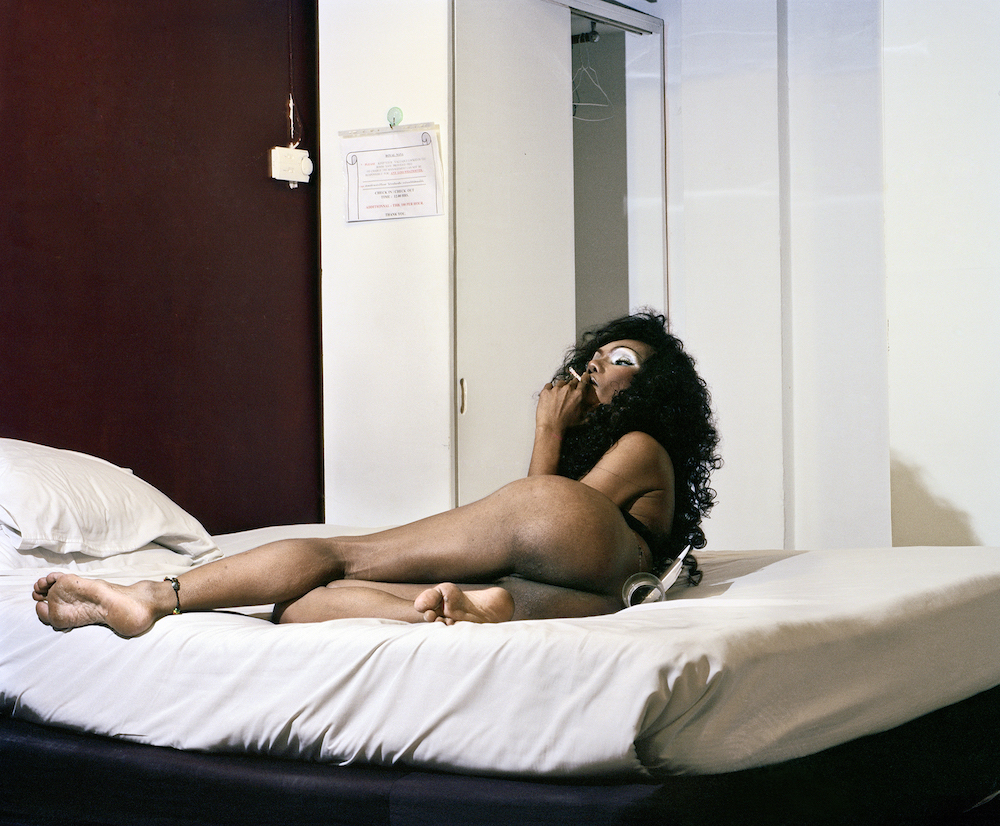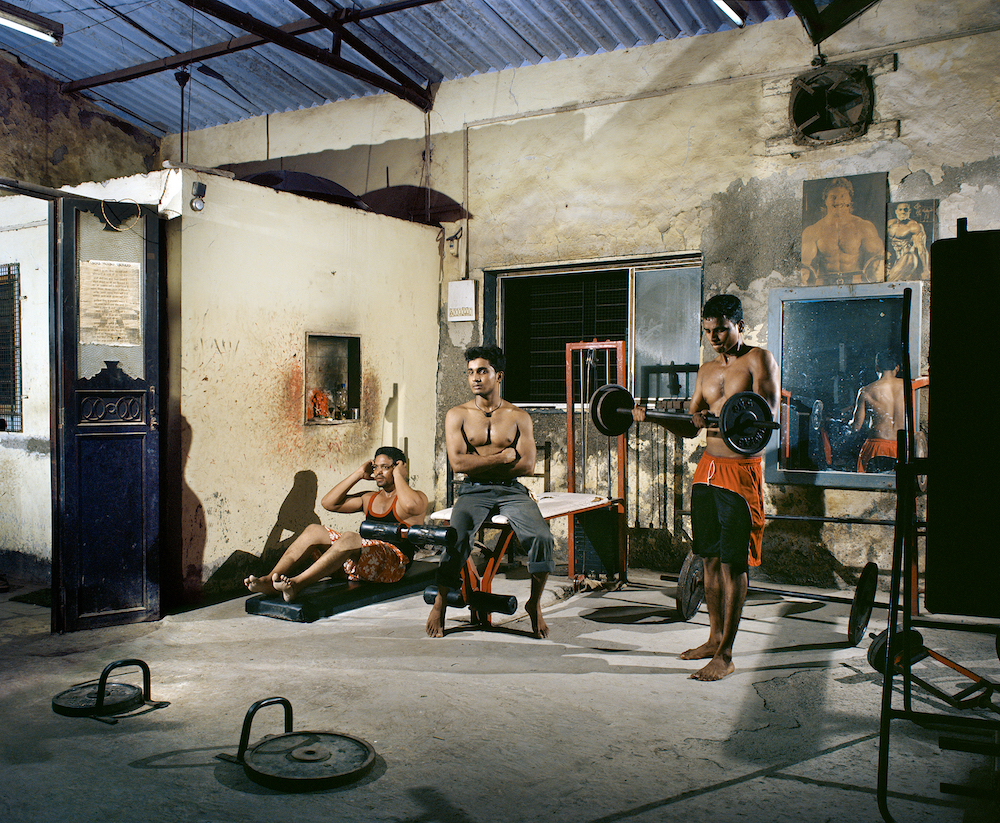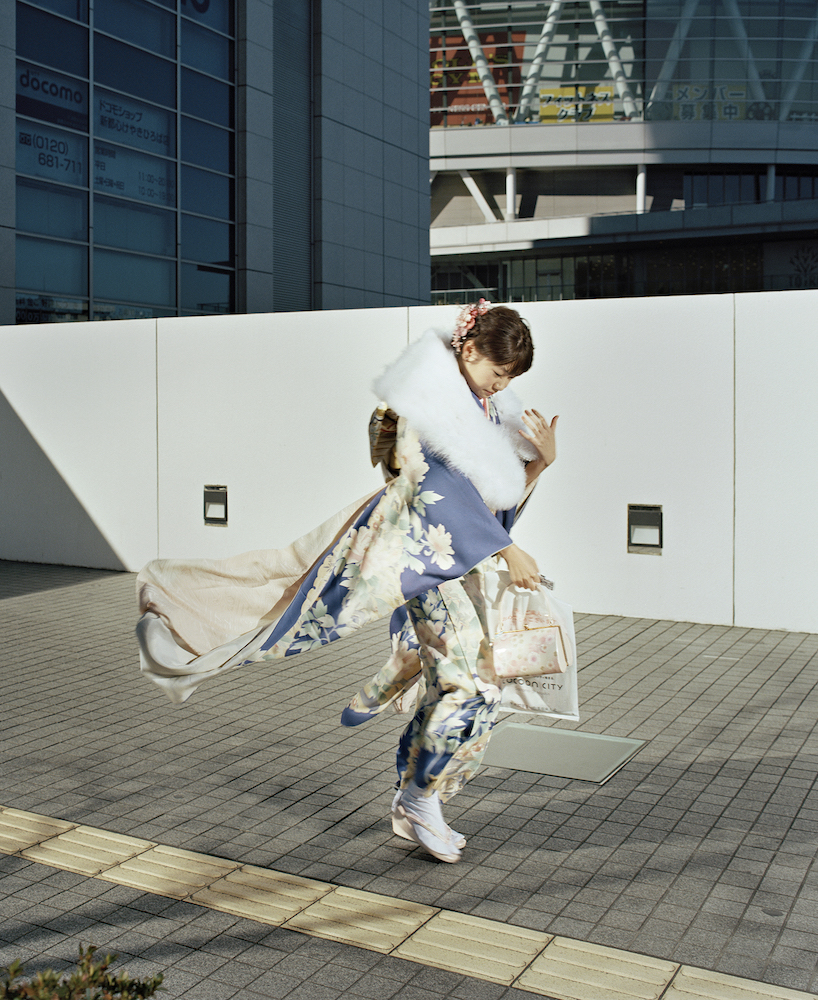by Dario Orlandi
_
The entire photographic production of Max Pinckers develops around a double ambiguity: the ambiguity of the real – multifaceted, manipulated, interpreted, invoked – and the ambiguity of the oldest of the media invested with the responsibility of documenting it, photography.
In his works – built with continuity of vision and conceptual evolution since 2011 – the photographer develops a sophisticated phenomenology of the ambiguous where the ambiguity of the scenarios is intertwined with that of the medium in a fruitful dialectic between content and language.
Lotus, of 2011, has as its primary subject transsexuality in Thailand. On a different level, the theme of the crisis of gender identity is for Pinckers a metaphor for the crisis of contemporary photojournalism, sandwiched between the legacy of the documental tradition, the limits of the medium and the hybridization of the language of modern narratives: “The crisis of genre […] is transformed into a visual metaphor of the crisis that confronts contemporary documentary photography when it dares to reflect on itself critically and confront itself with its own paradoxes.”
The approach to this first work is still mostly documentary, the images not completely set up. However, the prevalence of posed portraits, the recurring use of artificial lighting – elements that iconographically prolong the images towards the sphere of fiction – are an anticipation of the conceptual and aesthetic reflection that Pinckers will develop in the following years that will lead him away from the world of documentary photography tout-court; to undertake a survey work on the theme of the border – whatever it is and whether it exists – which separates construction and documentation and which constitutes one of the most significant areas of critical reflection on contemporary photography.

In the following The Fourth Wall of 2012, Pinckers continues his exploration investigating the effects of the iconography of Bollywood cinema on Indian collective identity. For this project the photographer asked random passers-by on the streets of Mumbai to picture themselves as characters in a film and to choose a role to play for a camera and a western photographer. “Conscious of the power of images, the actors [improvised, ed.] have given their best, reflecting on their big-screen dreams and embracing their collective visual world, creating brief moments of suspension and disbelief.”

Con Two Kinds of Memory and Memory Itself (2015) Pinckers moved the reflection on the fiction / reality relationship from the media to the cultural processes. For the author – who quotes the American writer David Pilling – “much of what seems to be the essence of Japanese culture [contemporary, ed.], turns out to be a modern distillate”, manufactured with the aim of building the national identity and maintaining the political order. A construction deliberately designed for a Western audience, rooted in traditional Japanese culture, which helps to create an idea of Japanese-ness that separates Japan from the rest of Asia.”
The process of Westernization of post-war Japan entailed the stereotyping of its collective identity in favour of the expectations of the target public (the Western world), in order to favour the demarcation of Japan from the rest of the Far East and bring it closer to the West. It is an ideal investigation scenario for Pinckers’ reflection: photography – an instrument, more than any other, suspended between fiction and reality – is a metaphor and an ideal language for investigating the dialectic between cultural sediment and modernization / stereotyping that characterizes contemporary Japanese identity.

If with The Fourth Wall and Two Kinds of Memory and Memory Itself Pinckers focuses on the alteration of the reality produced by highly structured environments (the Bollywood cinema, the cultural policy of the Japanese government), with Margins of Excess ( 2018) the author moves the reflection on the relationship between reality and fiction to the unstructured, immaterial and hyper-subjective plane typical of digital society, says Pinckers: “the current era of Post-Truth, in which truth, half- truths, lies, fiction or entertainment are easily exchanged, has produced a culture of “hyper-individual realities”, requiring a new approach to identify the underlying narrative forms that give structure to our perception of reality, in a world where there is no longer a shared frame of reality “. Where is the boundary between reality and representation when there are no more technical limits to the dissemination of content, when any font can be the generator of “information” without being subjected to verification? On what is founded the collective identity, on verified data or on consensually approved beliefs – by will, desire, projection, fear – even if false? And how does the public react to the proof that a belief – however reassuring or identifying – is false? Do you disregard or prefer the consolation of fiction to the harshness of truth?
The six stories photographed in Margins of Excess have reached a wide public consensus, they are strong, poignant, exciting … with the only limit of being false! Stories that are loved, commented on and divulgated, but false. So fake that you can – have to – photograph them.
So does photography reveal or reinforce the forgery when it is photographing it? And even in the face of the photographic falsehood, how do we react if the misleading image corresponds to our expectation, to a prejudice, to a projection?
How to better illustrate the fascinating ambiguity of the photographic medium that becomes an instrument of fiction believed and desired to the point of being documented, documenting the false?
Pinckers is certainly one of the most interesting photographers of the contemporary conceptual scene. His images are windows on the uncertainty of reality and the means to tell it, they lead us experientially to the heart of our elusive modernity.
In a world characterized by a technological speed such as to make – irony of positive thought – any reflection already dated in the very moment in which it is processed, we trust that in the coming junctions of the intricate dialectic between man and the world, there will be a Pinckers who, with the power and speed of images, will help us to understand – and possibly understand – the complexity of the present.
**Max Pinckers is the winner of the Leica Oskar Barnack Award 2018, his Red Ink series is on show at Photolux 2018, at the headquarters of the Chiesa dei Servi, until 9 December 2018 **
December 7, 2018




